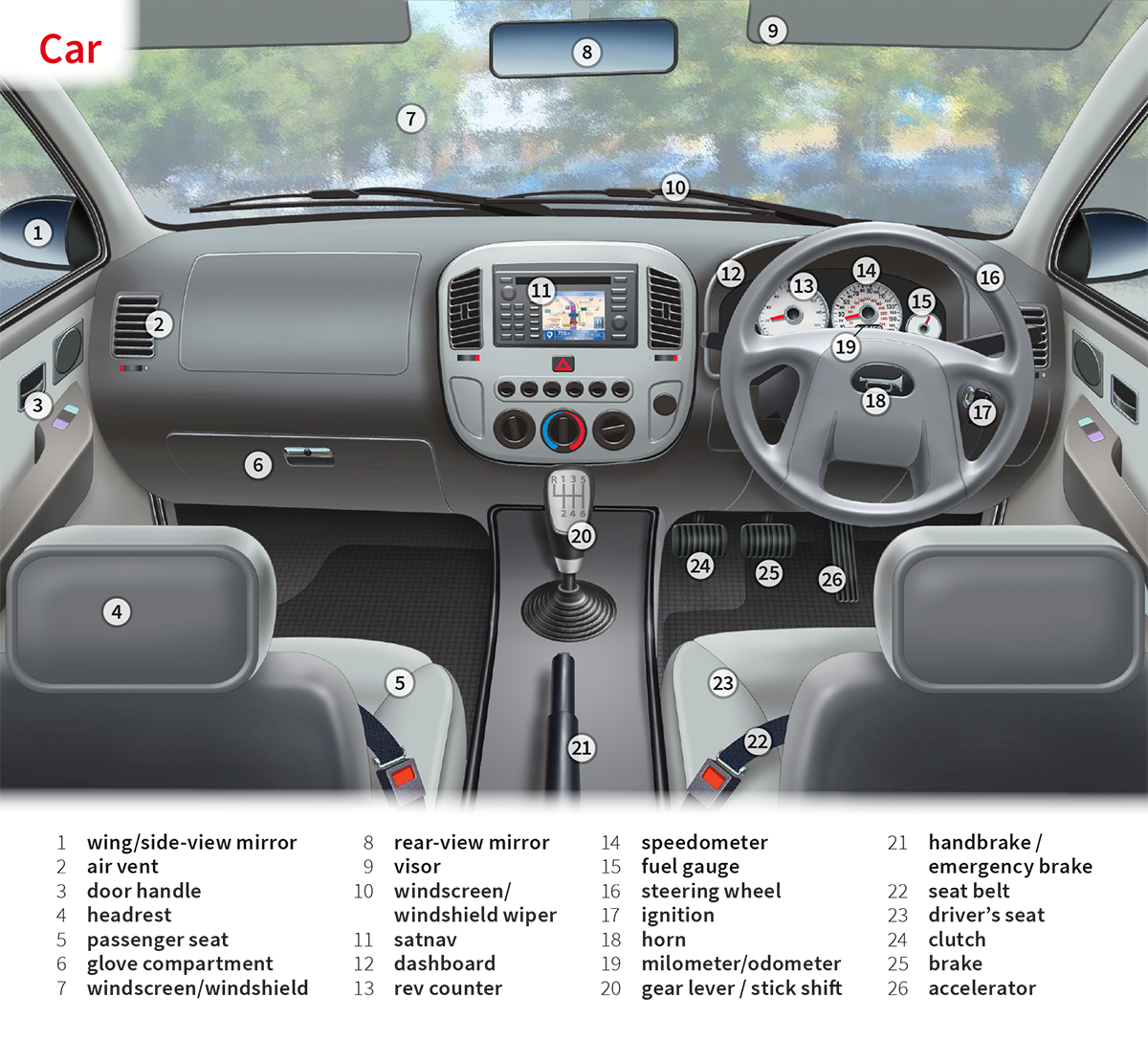- (also formal motor car especially in British English)(also North American English, formal automobile)
a road vehicle with an engine and four wheels that can carry a small number of passengers 小汽车;轿车 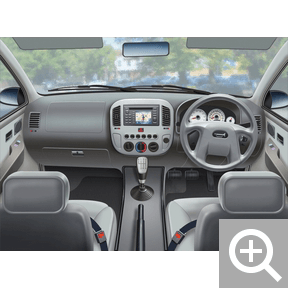
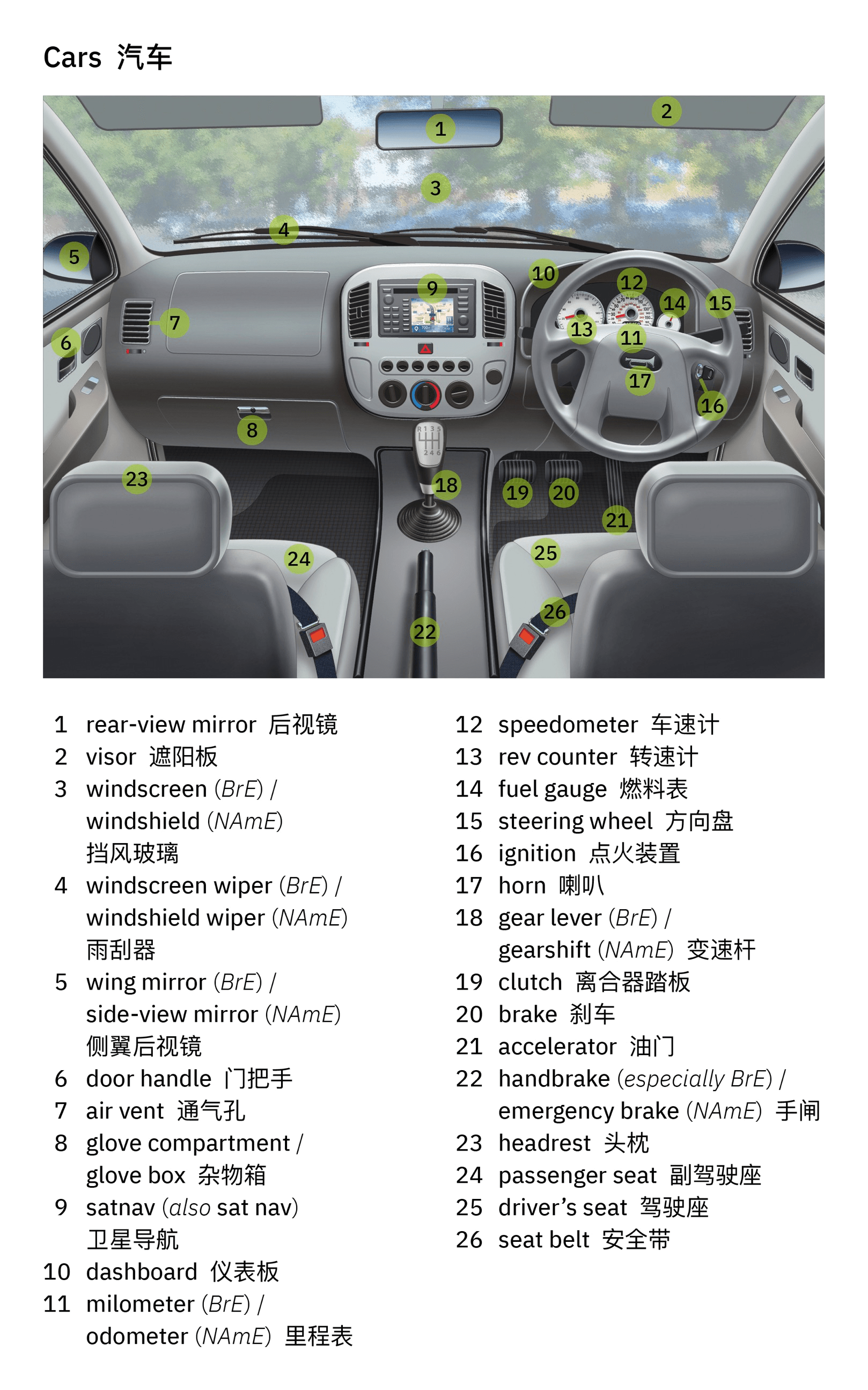
Paula got into the car and drove off. 葆拉钻进汽车后驾车而去。 - by car
How did you come?’ ‘By car.’ “你怎么来的?” “开车来的。” - in a/the car
Are you going in the car? 你要开车去吗? Her husband was driving the car at the time of the accident. 事故发生时,她的丈夫正在开车。 Where can I park the car? 我可以在哪里停车呀? There were parked cars on both sides of the road. 马路两边都停着车。 a car driver/manufacturer/dealer 汽车司机/制造商/经销商 a car accident/crash 汽车事故;撞车 I can't find my car keys. 我找不到我的车钥匙了。
Collocationssee also company car, in-car, panda car, race car, sports car, squad car, stock carDriving Driving 驾驶 Having a car 拥有一辆汽车 - have/own/(British English) run a car
有一辆汽车 - ride a motorcycle/motorbike
骑摩托车 - drive/prefer/use an automatic/a manual/(North American English, informal) a stick shift
开/喜欢/用自动挡/手动挡汽车 - have/get your car serviced/fixed/repaired
给汽车做一次保养/维修一下/修理一下 - buy/sell a used car/(especially British English) a second-hand car
买/卖二手车 - take/pass/fail a (British English) driving test/(both North American English) driver’s test/road test
参加/通过/未通过驾照考试/道路考试 - get/obtain/have/lose/carry a/your (British English) driving licence/(North American English) driver’s license
得到/拥有/丢失/携带驾照
Driving 驾驶 - put on/fasten/(North American English) buckle/wear/undo your seat belt/safety belt
系上/解开安全带 - put/turn/leave the key in the ignition
把钥匙插进点火开关;转动钥匙点火;把钥匙留在点火开关 - start the car/engine
发动汽车/引擎 - (British English) change/(North American English) shift/put something into gear
换挡;挂上挡 - press/put your foot on the brake pedal/clutch/accelerator
踩刹车/离合器/油门 - release the clutch/(especially British English) the handbrake/(both North American English) the emergency brake/the parking brake
松开离合器/手刹 - drive/park/reverse the car
驾车;停车;倒车 - (British English) indicate left/right
- (especially North American English) signal that you are turning left/right
- take/miss (British English) the turning/(especially North American English) the turn
拐弯;错过拐弯处 - apply/hit/slam on the brake(s)
踩刹车;猛踩刹车 - beep/honk/(especially British English) toot/(British English) sound your horn
按喇叭
Problems and accidents 问题及事故 - a car skids/crashes (into something)/collides (with something)
车打滑/撞上(某物)/(与某物)相撞 - swerve to avoid an oncoming car/a pedestrian
猛地转弯以避开迎面来的车/行人 - crash/lose control of the car
撞车;车失控 - have/be in/be killed in/survive a car crash/a car accident/(North American English) a car wreck/a hit-and-run
出车祸/肇事逃逸事故;在车祸/肇事逃逸事故中丧生;幸免于车祸/肇事逃逸事故 - be run over/knocked down by a car/bus/truck
被汽车/公交车/大卡车轧过/撞倒 - dent/hit (British English) the bonnet/(North American English) the hood
撞凹/撞上引擎盖 - break/crack/shatter (British English) the windscreen/(North American English) the windshield
打碎挡风玻璃 - blow/(especially British English) burst/puncture (British English) a tyre/(North American English) a tire
爆胎;扎破轮胎 - get/have (British English) a flat tyre/a flat tire/a puncture
胎瘪了;轮胎被扎破了 - inflate/change/fit/replace/check a tyre/tire
给轮胎充气;更换/安装/更换/检查轮胎
Traffic and driving regulations 交通法规 - be caught in/get stuck in/sit in a traffic jam
遇上堵车 - cause congestion/tailbacks/traffic jams/gridlock
引起交通堵塞 - experience/face lengthy delays
经历/面临长时间的延误 - beat/avoid the traffic/the rush hour
避开交通高峰时段 - break/observe/(North American English) drive the speed limit
超速行驶;遵守速度限制;限速行驶 - be caught on (British English) a speed camera
被测速摄像机逮住 - stop somebody for/pull somebody over for/(British English, informal) be done for speeding
因超速被要求停车/停靠路边/被逮住 - (both informal) run/(British English) jump a red light/the lights
闯红灯 - be arrested for/charged with (British English) drink-driving/(both US English) driving under the influence (DUI)/driving while intoxicated (DWI)
因酒后驾车/醉酒驾车被逮捕/起诉 - be banned/(British English) disqualified from driving
被禁止驾车;被取消驾驶资格
Culturedriving driving 驾驶 Extra ExamplesTopics Transport by car or lorrya1He pulled his car over at a small hotel. 他把车靠边停在一家小酒店旁。 She swerved her car sharply to the right. 她突然把车转向右边。 Her car skidded on a patch of ice. 她的车在一片结冰的路面上打滑。 His car hit a van coming in the opposite direction. 他的车与迎面驶来的小货车相撞。 I lost control of the car and it spun off the road. 我开的车失控了,打着转儿冲下了路。 The red car suddenly pulled out in front of me. 这辆红车突然从路边冲到我前面。 I'll wait for you in the car. 我在车里等你。 It's too far to walk. I'll take the car. 步行去太远了,我坐车去。 The kids all piled into the car. 孩子们一窝蜂地挤上了车。 It's very expensive to run a car these days. 现在养车很贵。 I have to take the car in for a service. 我得把车开进去检修一下。 The car does 55 miles per gallon. 这辆车每加仑油行驶 55 英里。 The car was doing over 100 miles an hour. 那辆车当时正以每小时 100 多英里的速度行驶。 The government wants more people to use public transport instead of private cars. 政府希望更多的人使用公共交通工具而不是私车。 The number of cars on the road is increasing all the time. 路上行驶的汽车数量一直在增加。 Police in an unmarked car had been following the stolen vehicle for several minutes. 警察驾无标志车跟踪了被盗车好几分钟了。 The robbers abandoned their getaway car and ran off. 劫匪将逃跑用的车丢弃后逃跑了。 The driver crashed the stolen car while being chased by the police. 司机在被警察追赶时撞毁了偷来的汽车。 There was a line of parked cars in front of the building. 大楼前停了一排车。 He opened the car door for her. 他为她打开车门。 I can put the wheelchair in the back of the car. 我可以把轮椅放在车后面。 I decided to buy a second-hand car. 我决定买一辆二手车。 They parked the car and walked the rest of the way. 他们把车停好,剩下的路步行。
Oxford Collocations Dictionaryadjective- fast
- new
- diesel
- …
- drive
- have
- own
- …
- start
- run on something
- do something
- …
- alarm
- boot
- door
- …
- by car
- in a/the car
- a brand of car
- a make of car
- a model of car
- …
- (also railcar both North American English)
a separate section of a train 火车车厢 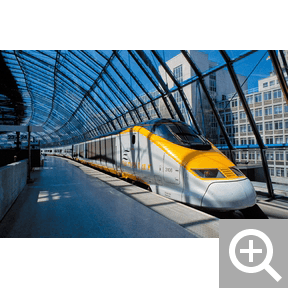
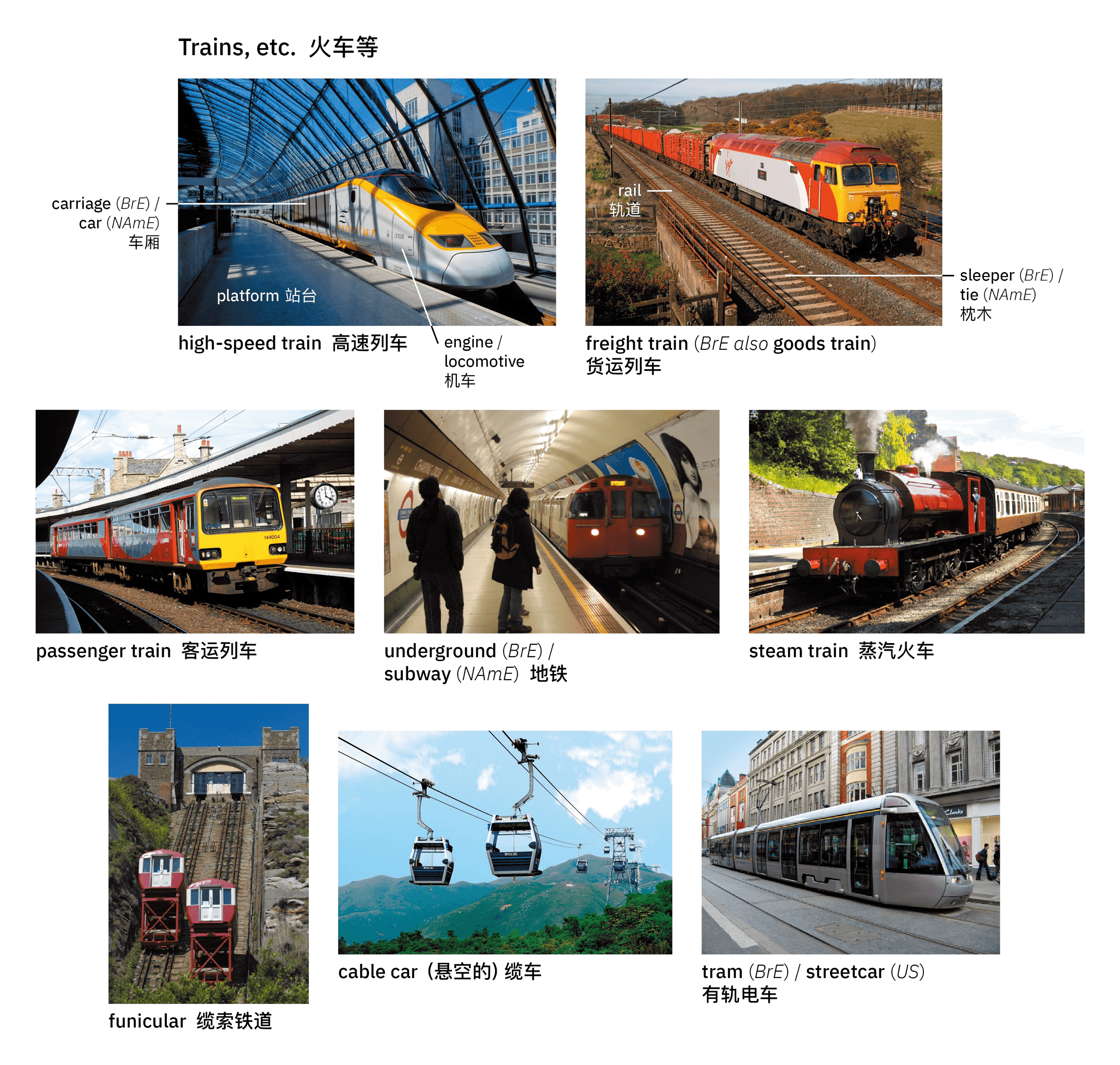 Oxford Collocations Dictionaryadjective
Oxford Collocations Dictionaryadjective- rail
- railroad
- railway
- …
- pull
(in compounds 构成复合词 a car on a train of a particular type (某种类型的)火车车厢 a sleeping/dining car 卧铺车厢;餐车
Oxford Collocations Dictionaryadjective- rail
- railroad
- railway
- …
- pull
Word Originlate Middle English (in the general sense ‘wheeled vehicle’): from Old Northern French carre, based on Latin carrum, carrus, of Celtic origin.

